The course descriptions on this page represent current and recent offerings in Film Studies. Please use the list to learn more about the content of courses available.
Core Courses
Film Studies/Art History 205 | History of Film: Development of an Art
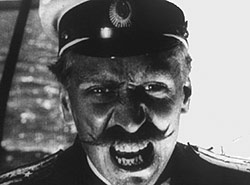 This course is an introduction to film history covering the period 1895-1941. Students will study the major industrial, technological, aesthetic, and cultural developments in motion picture history. Topics will include the invention of motion pictures, the establishment of a film industry and audience, the narrativization of film, developments in the use of cinematic technique, the history of theatrical film exhibition, the establishment of national cinemas, the idea of film as art, changing notions of cinematic realism and its alternatives, and technological innovation (especially the widespread adoption of synchronized sound). Films will includes shorts by the Lumière brothers, Méliès, Smith, and Porter, one-reel films by Griffith, and feature films such as Broken Blossoms (Griffith), The Cabinet of Dr. Caligari (Wiene), Nosferatu (Murnau), Battleship Potemkin (Eisenstein), Un Chien Andalou (Dalí and Buñuel), Sunrise (Murnau), Rules of the Game (Renoir), and Citizen Kane (Welles).
This course is an introduction to film history covering the period 1895-1941. Students will study the major industrial, technological, aesthetic, and cultural developments in motion picture history. Topics will include the invention of motion pictures, the establishment of a film industry and audience, the narrativization of film, developments in the use of cinematic technique, the history of theatrical film exhibition, the establishment of national cinemas, the idea of film as art, changing notions of cinematic realism and its alternatives, and technological innovation (especially the widespread adoption of synchronized sound). Films will includes shorts by the Lumière brothers, Méliès, Smith, and Porter, one-reel films by Griffith, and feature films such as Broken Blossoms (Griffith), The Cabinet of Dr. Caligari (Wiene), Nosferatu (Murnau), Battleship Potemkin (Eisenstein), Un Chien Andalou (Dalí and Buñuel), Sunrise (Murnau), Rules of the Game (Renoir), and Citizen Kane (Welles).
Film Studies/English 290 | Introduction to Film Studies
 This course introduces students to the basics of film analysis, cinematic formal elements, genre, and narrative structure and helps students develop the skills to recognize, analyze, describe and enjoy film as an art and entertainment form. To understand how films are constructed to make meaning and engage audiences, students will be introduced to the basic “building blocks” and formal elements (narrative, mise-en-scene, cinematography, sound and editing) that make up the film as well as some fundamental principles of analysis, genre, style, performance and storytelling. The class includes weekly readings, screenings, and short writing assignments.
This course introduces students to the basics of film analysis, cinematic formal elements, genre, and narrative structure and helps students develop the skills to recognize, analyze, describe and enjoy film as an art and entertainment form. To understand how films are constructed to make meaning and engage audiences, students will be introduced to the basic “building blocks” and formal elements (narrative, mise-en-scene, cinematography, sound and editing) that make up the film as well as some fundamental principles of analysis, genre, style, performance and storytelling. The class includes weekly readings, screenings, and short writing assignments.
Film Studies/English 390 | Classical Film Theory and Criticism
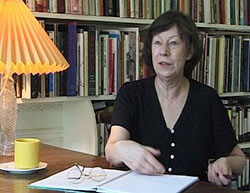 This course offers students an in-depth analysis of the history of film theory and criticism. Beginning with early debates about the cinema (in the light of wider debates about the significance of an emerging mass culture), we will survey cognitive, formal and ideology-focused theories of film, in order to better comprehend the nature of the medium and its relationship to the other arts, society, and spectatorship. The writings of the following theorists and others will serve as the major texts for the course: Hugo Munsterberg, Rudolf Arnheim, Sergei Eisenstein, Andre Bazin, Walter Benjamin, Jean-Louis Commolli, Christian Metz, Noel Burch, Stephen Heath and Laura Mulvey.
This course offers students an in-depth analysis of the history of film theory and criticism. Beginning with early debates about the cinema (in the light of wider debates about the significance of an emerging mass culture), we will survey cognitive, formal and ideology-focused theories of film, in order to better comprehend the nature of the medium and its relationship to the other arts, society, and spectatorship. The writings of the following theorists and others will serve as the major texts for the course: Hugo Munsterberg, Rudolf Arnheim, Sergei Eisenstein, Andre Bazin, Walter Benjamin, Jean-Louis Commolli, Christian Metz, Noel Burch, Stephen Heath and Laura Mulvey.
Film Studies 690 | Contemporary Film Theory and Criticism (Spring Only)
This course will investigate contemporary theories and criticism of cinema and/or television, from 1960 to the present. Theoretical approaches considered may include structuralism, semiotics, psychoanalysis, cultural studies, feminism, post-structuralism, queer theory.
Lower Division
Film Studies/Art History 206 | History of Film II: Development of an Art
This course is a global survey of cinema from the 1940s to the present. Topics include the demise of the American studio system in the 1950s, innovations in moving image technology, changes in filmexhibition, the spread of international art cinema, filmmaking in the developing world, the contemporary Hollywood blockbuster, the rise of independent cinema and film festivals, and the structure of the contemporary global media industries. Films screened may include Rebel Without a Cause (USA), Bicycle Thieves (Italy), Wild Strawberries (Sweden), Pather Panchali (India), Memories of Underdevelopment (Cuba), Yeelen (Mali), Raiders of the Lost Ark (USA), and Chungking Express (Hong Kong).
Film Studies/English 111 | Entertainment Arts
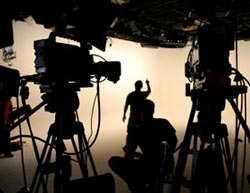 From cinema to cell phones, the multimedia context of contemporary life is rapidly changing; this course will examine some of those shifting and ubiquitous technologies and images. Entertainment Arts offers a general introduction to the critical study of film, television, and new media. While examining each technology individually we will also work in a state of persistent comparison, endeavoring to comprehend media culture as a larger phenomenon. Through readings, screenings, and discussions, students will develop sophisticated understandings of media culture in terms of technical properties, industrial practices, representation, cultural theories, social responses and more. This course counts towards the Digital Arts and Cultures Certificate.
From cinema to cell phones, the multimedia context of contemporary life is rapidly changing; this course will examine some of those shifting and ubiquitous technologies and images. Entertainment Arts offers a general introduction to the critical study of film, television, and new media. While examining each technology individually we will also work in a state of persistent comparison, endeavoring to comprehend media culture as a larger phenomenon. Through readings, screenings, and discussions, students will develop sophisticated understandings of media culture in terms of technical properties, industrial practices, representation, cultural theories, social responses and more. This course counts towards the Digital Arts and Cultures Certificate.
Film Studies/English 291 | Intro to Television Studies
For decades, television has been an important fixture in our daily lives. Now, we also increasingly watch TV on the go–using computers, cell phones, DVRs, and DVDs to keep up with our favorite shows. This course provides an introduction studying television both by looking back and forward. We will watch a wide variety of TV shows, including: The Twilight Show, West Wing, Battlestar Galactica, Bob’s Burgers, Buffy the Vampire Slayer, basketball games… sometimes you’ll even be assigned to watch the commercials! We will learn more about TV’s past and the factors shaping what television shows look like today. We will also discuss more recent technological changes, including the digitization of television, and how these things may affect what television looks like in the years to come.
Film Studies/English 295 | Women and Film
This course examines the representation and construction of women in American film. Readings and screenings will guide students through rigorous investigations of gender, sexuality, and feminism. We will employ and interrogate the following analytical approaches: images of women theories, feminist film theory, queer theory, industry studies, and historical film analysis. Screenings may include: Mildred Pierce, Thelma and Louise, Mississippi Masala, American Beauty, Rebecca, A Question of Silence, Orlando, Eve’s Bayou, Stella Dallas, Silence of the Lambs, Vertigo, Imitation of Life, Some Like it Hot, Aliens, Bend it Like Bekham, and Baghdad Café.
Film Studies 192 | First-Year Seminar
 Film and Place in the Contemporary World
Film and Place in the Contemporary World
We live in a globalized and mediated world where the movies we watch provide insight into the places where we work, eat, study, sleep, communicate, and dream. Analyzing film allows us to take a closer look at our relationships to the city and the country, to our homelands and foreign lands, to architecture, to modes of transportation, to the environment, and to Earth itself.
In this class, we’ll look at various examples of global cinema’s interpretation of place, and think about how films can help us to understand our own positions in space and time. A secondary goal of the class is to introduce you to critical issues in film studies. Films will be drawn from around the world; examples will include Fish Tank (UK), Fruitvale Station (USA), Still Life (China), Moon (UK), I’m Gonna Explode (Mexico), Ten (Iran), Beasts of the Southern Wild (USA), and Nostalgia for the Light (Chile).
Spring 2018 Film Studies 212 | Intermediate Topics in Film Studies: Business on Film
 A recent piece in Money Magazine describes Hollywood films about US businesses as “getting it all wrong.” This is certainly paradoxical considering the power and prestige of the entertainment industry in the US. In Hollywood, the world of business enacts many kinds of narratives, from conspiracy stories to morality plays to rags-to-riches dramas. In the Business Film, as in all genres, filmmakers put on display the full spectrum of human behaviors; but, then, how can the films that depict business dealings and business people be said to be so off target? Through sustained study in humanistic inquiry, students in this course will investigate this and other larger questions by examining just what and how films that take the world of business as their subject try to communicate about that world.
A recent piece in Money Magazine describes Hollywood films about US businesses as “getting it all wrong.” This is certainly paradoxical considering the power and prestige of the entertainment industry in the US. In Hollywood, the world of business enacts many kinds of narratives, from conspiracy stories to morality plays to rags-to-riches dramas. In the Business Film, as in all genres, filmmakers put on display the full spectrum of human behaviors; but, then, how can the films that depict business dealings and business people be said to be so off target? Through sustained study in humanistic inquiry, students in this course will investigate this and other larger questions by examining just what and how films that take the world of business as their subject try to communicate about that world.
Films may include: Wall Street, Working Girl, Nine to Five, Trading Places, The Social Network, Office Space, The Player, The Devil Wears Prada
Film Studies 212 | Intermediate Topics in Film Studies
U.S. Independent Cinema
Students in this course will engage with a variety of recent examples of independent film produced in the United States. In the course, we will examine the narrative, stylistic, industrial and cultural aspects of contemporary U.S. independent film. To structure our course, we will be reading both academic and popular criticism about the films and about the seemingly inexhaustible and endlessly regenerative independent film movement. Among others, we will discuss films by Kelly Reichardt, Lance Hammer, and Rahmin Bahrani.
Film Studies 212 | Intermediate Topics in Film Studies
Introduction to the Road Film
This course focuses on the study of the road genre in film. Over the semester, we will use these films as a lens through which to view history and culture as it connects to movement, identity, progress, and nostalgia. In looking at this genre in depth, we will investigate the formations of the journey narrative as well as the aesthetic of the road film. While this course will feature mostly U.S. films, we will also study road films produced in Latin America, Europe, and Australia as well.
As we study these films, I encourage you to keep the following questions in mind: What are the criteria for a road film? What kinds of roots does it have in cinematic history? Why does this genre focus so much on masculine journeys? What role do women play in these films? How do these films represent gender and how does this depiction change over the decades? What is the difference between journey and travel? Is it possible to understand people of different class, race, or sexuality by encountering them during a journey? How does nostalgia function in these narratives? How does the force of restlessness battle the desire for home? Why are many of the film’s protagonists resistant to progress, yet hungry for change? Screenings include Bonnie and Clyde, Easy Rider, Planes, Trains, and Automobiles, Thelma and Louise, and The Motorcycle Diaries, among others.
Film Studies/Comp Lit 233 | Literature and Film
Body and Desire from Hollywood to Bollywood
The human body, by dint of its placement in culture and history, is laden with meaning. Its movement in space, posture, stylization, affect and sensation, cannot but signify. But besides this semiotic inevitability, the body also lives a life in materiality. This material body, though unsymbolizable, is intensely explored in cinema, by way of crises that endanger its being, producing narrative tension and visual fascination. This being body in crisis reveals a complex of desire, desire both as a sociohistorical imprint that structures the body’s meaning and as a material transgression against that meaning. Through a group of films produced in different parts of the world, this class will study how the human body in cinema is often straddled between meaning and being, performing the paradoxical function of creating an otherness within the symbolic. We’ll examine how films from different cultures stage unusual situations to call forth the material body, and what critical agency such a body often brings forth. We’ll observe how such psychosomatic practices as religion (eastern), martial arts, music and dance, occult rituals, dragging, psychiatric therapy, scientific experiments, etc., mold, affect, or produce the body’s meaning and desire, and how film diegesis mediates that meaning and desire through its own cultural codes. The objective of our study is to discover how this unique cinematic body opens up dimensions of truth we do not normally see, truth that undermines the entrenched norms of society by overstepping many boundaries, from those of race, class, gender, sex, to what it means to be human. The course satisfies the international requirement of the College of Letters & Science.
Film Studies/Comp Lit 233 | Literature and Film
The Gangster Film in the East and West
This class will study the gangster film as a genre originating in America and how after traveling to other parts of the world, especially Asia, it undergoes interesting changes while retaining important generic features. Although as in other continents the genre has been frequently bent, hybridized, or parodied to fit the cultural needs of the local, its transplant has also made it truly global. By comparing Asian gangsters with their Western counterparts in theme, style, visual content, and social function, we want to find out what common qualities bind them. A good knowledge of how this popular cultural form travels and finds home in the East may lead to a deepened understanding about the processes of global modernity that has been inexorably transforming the spatial and temporal structures of our lives. Our objectives are to learn to analyze film texts from different parts of the world with a comparatist approach, and to learn to construct interpretive arguments that are clear, coherent, persuasive, and well organized. The course satisfies the international requirement.
Upper Division
Film Studies/Art History 307 | Film Directors
Global Queer Auteurs: Fassbinder/Akerman/Tsai
Film Studies/Art History 307 | Film Directors
Women Directors
While women have worked in all sectors of film production, this course specifically considers the legacies of women film directors in the history of cinema and into the present. This class will examine the particular challenges that women filmmakers face, as well as the unique and innovative contributions they have made to film aesthetics and narrative form. This class will also introduce students to some of the central debates within feminism from the 1970s and into the present, in particular feminism’s influence on women’s independent film production, and with a focus on the question of female authorship. What kind of aesthetic and narrative strategies have women filmmakers used to create alternative fictions and documentations of gender conventions, female pleasure, everyday life and social experience? Analyzing the work of female filmmakers who have broken with, resist or work outside classical Hollywood conventions, this course will address the relationship between film form and ideology. Discussing directors such as Alice Guy Blache, Lois Weber, Maya Deren, Germaine Dulac, Dorothy Arzner, Yoko Ono, Barbara Loden, Chantal Akerman, Vera Chytilova, Lizzie Borden, Agnes Varda, as well as the more recent works of Cheryl Dunye, Lucrecia Martel, Claire Denis, Catherine Breillat, Lynne Ramsay, Kelly Reichardt, and Samira Makhmalbaf, this course will take a retrospective and prospective vantage point on the relationship between different generations of women’s films and feminist theories, within the broader cultural contexts of the feminist movement, gay, lesbian, and queer studies, and developments in the fields of race, class and post-colonial studies.
Spring 2018 Film Studies/English 312 | Topics in Film Studies:
Cinema and Digital Culture
 From cinema to cell phones, the multimedia context of contemporary life is rapidly changing. From the late 19th century kinetoscope to the 21st century iPhone, moving image culture has, in fact, never stopped reinventing or creating itself anew. This course provides a general introduction to the critical study of motion pictures in relation to digital media. We will examine the nature of the digital from a variety of perspectives: technological, economic and social. However, our primary approach will be cultural and aesthetic. Namely, we will look at how “new media,” such as digital photography, video games, virtual reality, and the “World Wide Web,” refashion earlier forms such as film and television, as well as how these latter are, themselves, influenced by emerging media. In addition to studying critical, historical and theoretical texts on new technologies, we will consider the place of the Self within the context of new media.
From cinema to cell phones, the multimedia context of contemporary life is rapidly changing. From the late 19th century kinetoscope to the 21st century iPhone, moving image culture has, in fact, never stopped reinventing or creating itself anew. This course provides a general introduction to the critical study of motion pictures in relation to digital media. We will examine the nature of the digital from a variety of perspectives: technological, economic and social. However, our primary approach will be cultural and aesthetic. Namely, we will look at how “new media,” such as digital photography, video games, virtual reality, and the “World Wide Web,” refashion earlier forms such as film and television, as well as how these latter are, themselves, influenced by emerging media. In addition to studying critical, historical and theoretical texts on new technologies, we will consider the place of the Self within the context of new media.
Films may include: Time Code, Matrix, Avatar
Film Studies/English 312 | Topics in Film Studies
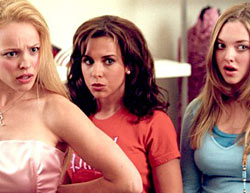 Troubled Teens
Troubled Teens
As film critic Timothy Shary observes, “When teens began hanging out at the mall in the early 1980s, the movies followed.” The types of films that screened are diverse, but the teen delinquency film is perhaps most revealing. This course examines this sub-genre in an attempt to chart the representational strategies of teens by, mostly, adults. We will watch a variety of the teen centered films that help generate questions about socio-economic status, gender, whiteness, ethnicity, sexuality, race, and maybe too about the reasons behind why teens are who they are on screen and otherwise.
Films might include: Kids, Heathers, Elephant, Mean Girls, The Breakfast Club, Brick, Donnie Darko, and more.
Film Studies/English 312 | Topics in Film Studies
Queer Cinema
This course examines the way in which the political and cultural manifestation known as “queerness” has found articulation, particularly since the 1990s, in contemporary US cinema and media practices. In specific, queer cinematic texts question what our society has edified as normative roles and behaviors in terms of gender and sexuality, specifically as they relate to understanding identity as an essence. This questioning of “queer” goes beyond calling attention to the hegemony of heterosexuality and its division of gender, to include criticisms of what became the dominant forms of “gay” and “lesbian” identities (usually, white and bourgeois ones whose main aim was to gain recognition and acceptance from mainstream society) as well as other forms of gender and sexual expression that have been historically marked as deviant: prostitution, pedophilia, sadomasochism, and transgenderism, just to name a few. Some of the key directors whose work we will study include Gregg Araki, Cheryl Dunye, Todd Haynes, Tom Kalin, Jenny Livingston, John Cameron Mitchell, Christopher Münch, Marlon Riggs, Rose Troche, Ella Troyano, and Gus Van Sant. In addition, we will look at a few filmmakers — such as R. W. Fassbinder, Derek Jarman, Andy Warhol, and John Waters — who might be historically understood as critical predecessors of queer cinema.
Film Studies/English 316 | World Cinema
Latina/Latin American Women Directors
The class explores the works of Latina and Latin American women directors since the 1980s. We will study their films and how they engage with discourses of gender, politics and aesthetics in relation to notions of Latinidad and Latin Americanness. A partial list of the filmmakers includes: Suzana Amaral (Brazil), María Luisa Bemberg (Argentina), Patricia Cardoso (USA), Lucrecia Martel (Argentina), María Novaro (Mexico), Euzhan Palcy (Martinique), Lourdes Portillo (USA), Fina Torres (Venezuela).
This course counts towards the following undergraduate degrees:
* Film Studies
* Latino Studies
* Latin American and Caribbean Studies
* Latin American, Caribbean and U.S. Latino Studies (integrated course)
* Lesbian, Gay, Bisexual and Transgender Studies
* Women’s and Gender Studies
Film Studies/English 316 | World Cinema: South Korean Cinema
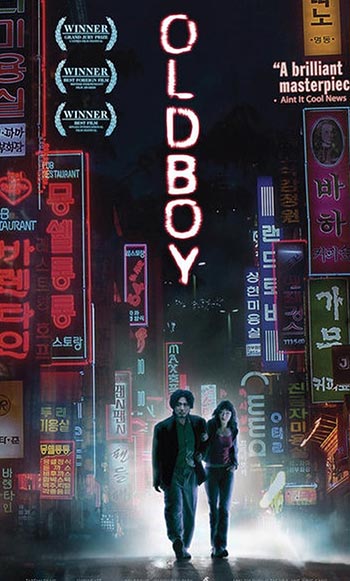 Since the beginning of the new millennium, a major world cinema has emerged in South Korea. Filmmakers such as, Park Chan-wook, Lee Chang-dong, and Bong Joon-ho have won prizes at international film festivals, while South Korea has become one of a handful of nations where films made within the country attract larger audiences than those produced by Hollywood. This course examines the historical conditions behind the emergence of the new South Korean cinema and the ways in which South Korean films reflect the dynamic and unsettled character of South Korean society. We will explore how South Korean cinema deals with the traumas of Korea’s modern history as well as lays bare the insidious pathologies of postmodern affluence.
Since the beginning of the new millennium, a major world cinema has emerged in South Korea. Filmmakers such as, Park Chan-wook, Lee Chang-dong, and Bong Joon-ho have won prizes at international film festivals, while South Korea has become one of a handful of nations where films made within the country attract larger audiences than those produced by Hollywood. This course examines the historical conditions behind the emergence of the new South Korean cinema and the ways in which South Korean films reflect the dynamic and unsettled character of South Korean society. We will explore how South Korean cinema deals with the traumas of Korea’s modern history as well as lays bare the insidious pathologies of postmodern affluence.
Films may include: The Quiet Family, The Isle, Oldboy, Secret Sunshine, Paju, The Front Line, Mother, The Wailing, Bedevilled, and Train to Busan
Film Studies/English 316 | World Cinema
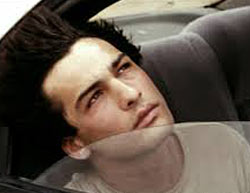 Global Road Films
Global Road Films
The course examines how the road movie genre has found articulation in different national contexts as well as in the present global arena. The course pays attention to the transformations and reconfigurations necessary for the road movie genre to undergo in order to address and to engage with the particular cultural discourses of different national contexts—and in some cases of globalization itself.
Screenings will include: Alice in den Städten (Germany), Borat (USA), Chen gwong tsa sit (Hong Kong), Le Grand Voyage (Morocco/France), Historias mínimas (Argentina), Iracema—Uma Transa Amazônica (Brazil/Germany/France), Leningrad Cowboys Go America (Finland/Sweden), Messidor (France/Switzerland), Miel para Oshún (Cuba/Spain), Radio On (UK), Sin dejar huella (Mexico/Spain)
Film Studies/English 316 | World Cinema: French New Wave
 In a few short years, from 1958 to 1963, a group of daring young French critic-turned-filmmakers made a series of films that transformed the cinematic landscape in France and abroad. This course will explore the origins and radical developments of the nouvelle vague movement: from pioneering approaches to the film script, adaptation and mise-en-scène to philosophical reflections on signs and meaning to the blurring of boundaries between reality and artifice, documentary and fiction, personal and social history. We will examine the work of its most innovative forerunners and inheritors, as well as its key directors or auteurs, including Agnès Varda, François Truffaut, Jean-Luc Godard, Alain Resnais, and Chris Marker.
In a few short years, from 1958 to 1963, a group of daring young French critic-turned-filmmakers made a series of films that transformed the cinematic landscape in France and abroad. This course will explore the origins and radical developments of the nouvelle vague movement: from pioneering approaches to the film script, adaptation and mise-en-scène to philosophical reflections on signs and meaning to the blurring of boundaries between reality and artifice, documentary and fiction, personal and social history. We will examine the work of its most innovative forerunners and inheritors, as well as its key directors or auteurs, including Agnès Varda, François Truffaut, Jean-Luc Godard, Alain Resnais, and Chris Marker.
Films may include: Breathless, Last Year at Marienbad, Cleo from 5 to 7, Sans Soleil
Spring 2018 Film Studies/English/Comp Lit 316 | Contemporary Chinese Cinema
This course explores Chinese cinematic imagination through a series of films produced in mainland China, Taiwan and Hong Kong. The point of entry is the surge of creative innovations taking place in the 1980s as the Chinese-speaking communities began to re-imagine their world and history, forming new cultural identities and building a symbolic universe that interfaces with the world at large. This course examines how the region’s transnational film making addresses the pressing issues of the world through cinematic affects and sensations unique to Chinese-language cinema. Screenings May Include: Yellow Earth, Horse Thief, Judou, The Puppet Master, and Chungking Express. This course is jointly offered by English, Film Studies, and Comparative Literature.
Film Studies/English 320 | Studies in Film Authorship: Jarmusch, Lee, Bigelow, Linklater
 In this course, students will watch and read about four contemporary “independent” directors, each of whose careers span 25-30 years and who are currently making films. Beginning in the 1980’s, these filmmakers’ works can be shown to trace a progression of independent filmmaking that engages the “Sundance” renaissance as well as with the mainstreaming of independent filmmaking. We will also examine how these filmmakers are “outside” Hollywood hegemony, even when working inside the industry, with insider talent, through the lens of race, gender, class, and privilege.
In this course, students will watch and read about four contemporary “independent” directors, each of whose careers span 25-30 years and who are currently making films. Beginning in the 1980’s, these filmmakers’ works can be shown to trace a progression of independent filmmaking that engages the “Sundance” renaissance as well as with the mainstreaming of independent filmmaking. We will also examine how these filmmakers are “outside” Hollywood hegemony, even when working inside the industry, with insider talent, through the lens of race, gender, class, and privilege.
Film may include: Stranger Than Paradise, The Only Lovers Left Alive, Do the Right Thing, Bamboozled, Near Dark, The Hurt Locker, Slacker, and Boyhood.
Spring 2018 Film Studies/English 320 | Hitchcock and Beyond
This course will address the theoretical and critical significance of Hitchcock and his films. Additionally, Hitchcock’s legacy will be addressed at the end of the semester by reading about, and viewing films influenced by Hitchcock. Few filmmakers have inspired as much fascination, criticism, critique, imitation, and attention as Alfred Hitchcock. His career spanned the Silent Era to the Golden Age of Hollywood to New Hollywood, and during that time he transformed and redefined the thriller and horror genres. We will examine the themes, motifs, issues, images, and ideas in the films and in so doing, gain greater insights into these works and their significance. Screenings May Include: Vertigo, Psycho, Rear Window, The Lady Vanishes, The Birds, and Gone Girl.
Film Studies/English 329 | Film and Literature
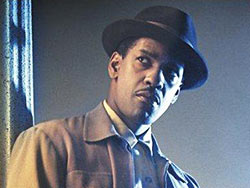 Students in this course will explore approaches to the art, theory, and cultural politics of movie adaptations. Through readings and screenings, students will be asked to interrogate these and other questions: What is the nature of the “literary” and the “cinematic?” Why do so many of the films described as adaptations derive from canonical literature rather than from other sources? How do the different media affect the ways in which stories are told? Why is the book always “better” than the movie? To support students in developing and focusing their own theories of adaptation, we will also be reading selected adaptation theory and criticism, including writings by Andre Bazin, Robert Stam, and Judith Mayne.
Students in this course will explore approaches to the art, theory, and cultural politics of movie adaptations. Through readings and screenings, students will be asked to interrogate these and other questions: What is the nature of the “literary” and the “cinematic?” Why do so many of the films described as adaptations derive from canonical literature rather than from other sources? How do the different media affect the ways in which stories are told? Why is the book always “better” than the movie? To support students in developing and focusing their own theories of adaptation, we will also be reading selected adaptation theory and criticism, including writings by Andre Bazin, Robert Stam, and Judith Mayne.
Our primary texts might include Fight Club, Devil in a Blue Dress, Contempt, and The Handmaid’s Tale.
Film Studies/English 380 | Media and Society
1960s U.S. Cinema
Fall 2018 Film Studies/English 383 | Cinema and Genre: History of Animation
 This course surveys the general concepts and history of animated film from the silent era through the digital turn. We will trace the development of techniques and approaches through major American studios (Disney, Fleischer, Warner Bros), as well as chronologically complementary examples from solo, experimental, and international animators. We will also take a conceptual look at more contemporary forms including stop-motion, anime, and 3D animation. We will always attend to issues of class, gender, politics, and race as we ask what animation can tell us about film’s uncanny relationships to life and death.
This course surveys the general concepts and history of animated film from the silent era through the digital turn. We will trace the development of techniques and approaches through major American studios (Disney, Fleischer, Warner Bros), as well as chronologically complementary examples from solo, experimental, and international animators. We will also take a conceptual look at more contemporary forms including stop-motion, anime, and 3D animation. We will always attend to issues of class, gender, politics, and race as we ask what animation can tell us about film’s uncanny relationships to life and death.
Films may include: The Adventures of Prince Achmed, Akira, Snow White, Fantastic Planet
Film Studies/English 383 | Cinema and Genre
Film Noir
The emphasis of this course will be the Film Noir genre as it is expressed visually and thematically. Through discussions and course readings, students will explore the origins of Film Noir, the Noir visual style, and the cultural, historical, psychological, sociological, and gender issues that are typically reflected in Noir narratives.
Film Studies/English 383 | Cinema and Genre
Horror Films 1960-1985
The course surveys the gradual transformation of horror films — mostly but not exclusively in the U.S. — from B-movie status to a popularly and critically praised genre during the 25-year period between 1960 and 1985. The release of Alfred Hitchcock’s Psycho in the U.S. and Michael Powell’s Peeping Tom in the U.K. in 1960 marks a transition in terms of thematic, ideological and narrative approaches to conveying horror filmically. The historical changes that took place after 1960 (the Vietnam War, the Watergate scandal, the women’s movement, the sexual revolution, the civil rights movement, the end of the Hays Code and the appearance of the MPAA ratings system, among others) further transformed the cinematic configuration of the horror genre, giving many directors the opportunity to create socially relevant and aesthetically challenging texts that were able to engage a wide variety of audiences (e.g., the youth, African Americans).
We will study a number of filmmakers who emerged as horror auteurs during the aforementioned 25-year period — Wes Craven, George A. Romero, Brian de Palma, Larry Cohen, Tobe Hooper, and David Cronenberg. In addition, we will explore some of this period’s horror subgenres: demonic entities/ possessions, science-makes-nature-run-amok, and the slasher/stalker films. In order to understand the social relevance of these films as cultural artifacts, the course will pay close attention to these films’ relationship to their historical context. Thus, we will examine how these films engage discourses related to gender, race, class, sexuality, and nationality. Warning: The purpose of the class is to understand the horror genre critically. If you cannot tolerate gore, violence, and profanity, or if any of the topics and issues depicted in these films go against your moral and religious beliefs, you should not take this course. There are plenty of other Film Studies courses that would be a better fit to your interests and way of life. In addition, if you are interested in horror films only from the standpoint of a fan or movie buff, this course will not fulfill your expectations.
Film Studies/English 383 | Cinema and Genre
Science Fiction
Film Studies/English 383 | Cinema and Genre
The Western
This course is intended to introduce students to the history of the western as a cinematic genre. In it, we will watch at least sixteen classical, “neo,” revisionist, acid, and other Westerns and read a variety of genre and Western criticism. Through essays and discussion, students will critically analyze the formal and thematic elements that create meaning in this genre.
Spring 2018 Film Studies/English 383 | Horror (1985-Present)
This course surveys the development of horror film from 1985 until the present. We will look at a diverse array of global horror in order to address questions around the form, use, and context of the genre. What does it mean to be scared? How have our definitions of visual and aural terror changed over the past three decades? How should we define the impact of gender, race, class, and sexuality in horror film? Potential Screenings May Include: Prince of Darkness, Scream, Hellraiser, A Tale of Two Sisters, The Devil’s Rejects, The House of the Devil, The Babadook, Get Out.
Film Studies/English 391 | TV Criticism and Theory: Television Studies and the TV Industry
 This course offers an in-depth look at contemporary television with an emphasis on content, the industry, and technology. We will examine many aspects of the business and pleasure of making and watching television through a focus on show-runners and writers, changing genres and programming conventions, shifting technologies, social media, webTV and streaming content—and how all these factors influence television storytelling and our overflowing media culture.
This course offers an in-depth look at contemporary television with an emphasis on content, the industry, and technology. We will examine many aspects of the business and pleasure of making and watching television through a focus on show-runners and writers, changing genres and programming conventions, shifting technologies, social media, webTV and streaming content—and how all these factors influence television storytelling and our overflowing media culture.
Screening examples will include: Better Call Saul, Empire, Parks and Rec, Lost, Saturday Night Live, The Walking Dead, No Reservations, Fresh Off the Boat, House of Cards, Hell’s Kitchen, American Idol, Girls, The Bridge, Between Two Ferns, Homeland and more.
Spring 2018 Film Studies/English 394 | Theories of Mass Culture
Trans-Media Narratives
How does the work of the storyteller change as stories move across media, or into complex inter- or remediations? Working across print, film, digital fiction, and video games, this class looks at various trans- and remediated stories, uncovering the ways in which their status as mediated objects intersects their constructions of heroism, monstrosity, identity, and history. Potential Works May Include: Watchmen (film and graphic novel), Birdman (film), Frankenstein (novel), Bioshock Infinite (video game), Tigerman (novel). This course also fulfills a requirement for English: Track H.
Comp Lit 362 | Transnational Asian Cinema
New Chinese Cinema
The course is designed to study the Chinese films produced after the Cultural Revolution. These films are remarkable not only for their visual beauty, but also for their ability to communicate complex social/cultural issues to an international audience. We shall focus on their formal innovativeness in light of their relations to the cultural history that has shaped their artistic meaning. We shall examine how this post-Cultural Revolution cinema demolished socialist realism and expanded its artistic expressions to address the cultural subjectivities of a global spectatorship. The class will include representative films from Hong Kong and Taiwan produced at the same period. The films to be studied includes: Yellow Earth, Judou, Horse Thief, The World, The Puppet Master, and Chungking Express. The seminar is for both undergraduate and graduate students and satisfies the international requirement.
Comp Lit 461 | Film-Fiction Interaction
Cinema and Politics
In this course, we will examine a series of questions clustered at the nexus of the political and the theological, such as: What is the role of faith in the transformation of political collectivies? What would it mean to develop a philosophy and a politics without relying upon myths? How is the question of the soul related to the questions of political life? Readings to include V for Vendetta by Alan Moore, The Human Condition by Hannah Arendt, Straw Dogs by John Gray, Gravity and Grace by Simone Weil, Fear and Trembling by Soren Kierkegaard, The Fragile Absolute by Slavoj Zizek, and The Telling by Ursula Le Guin. Films to include: The Sacrifice (dir. Andrei Tarkovsky, Sweden, 1986), Save the Green Planet! (dir. Jang Joon-Hwan, South Korea, 2003), The Rules of the Game (Jean Renoir, France, 1939), The Legend of Rita (dir. Völker Schlöndorff, Germany, 2000), and Army of Shadows (dir. Jean-Pierre Melville, France, 1969).
French 451 | Cinema of the French Speaking World
Turning Twenty
Echoing the literary genre of the bildungsroman, French cinema offers a wide range of films that deal with coming-of-age stories. In this course, we will explore films that focus on the psychological growth of the protagonist and the challenges encountered by young people as they navigate relationships and social spaces. Facing rites-of-passage and conflicting value systems, these characters are torn by ethical, political, sexual, emotional, and professional dilemmas. By comparing the genres, themes, formal elements, and narrative structure of these films and placing them in their historical, cultural, political, and philosophical context, we will investigate the various figures associated with French youth, such as the écorché vif (the tormented soul). Through weekly readings, screenings, discussions, and written analysis, students will develop sophisticated understandings of cinematographic representations, while expanding their knowledge of critical concepts and vocabulary in French. We will discuss films by Olivier Assayas, Jacques Audiard, Laurent Cantet, Philippe Garrel, Louis Malle, Emmanuelle Millet, Éric Rohmer, André Téchiné, François Truffaut, and Érick Zonca. The course will be conducted entirely in French.
Italian 322 | Introduction to Italian Literature and Film
This course provides activities designed to expand your vocabulary and abilities to use a broader variety of language forms for self-expression in oral and written Italian. At the same time, class discussions, presentations, and writing assignments will explore central issues in the contemporary life and culture of Italy, as suggested by short stories, articles and films, among other materials. Topics include regional identity and dialects, mass culture, and feminism. Prereq: Italian 204 or placement.
Graduate Courses
Film Studies/English 742 | Media Culture
Film Studies/English 743 | Intro to Film Theory and Criticism
Film Studies/Art History/English 761 | Contemporary Art Cinema
Sensing Time
It may seem a given that cinema is a medium that has a privileged relationship to temporality — cinema takes time and it makes time. Film uses and sculpts time as material, collects the fragmented and the momentary as an archive, a repository of multiple temporalities, and alters and manipulates the spectator’s experience of time and duration in its form — from the temporal condensations of montage to the meandering lassitude of the long take. Cinema thus has much to contribute to philosophies of lived time and systematized time, and philosophical accounts of temporality have much to underwrite an understanding of the cinema. This graduate seminar brings together film theory and the philosophy and cultural histories of temporality, placing them in dialogue with the international art cinema, a cinematic tradition that has perhaps most overtly made its project the act of “sensing time.” The art cinema — historically associated with a non-normative orientation towards narrative construction, long affiliated with modernist and “post-classical” experimentation with the non-linear, non-teleological, and with an often too slow, ill-paced, durationally challenging retinue – provides fertile material for exploring the political and aesthetic stakes of temporal forms in contemporary global film culture. We will explore cinematic tropes and figures intrinsically bound up with temporal concepts: labor and leisure, the everyday, the instant and the fragment, historicity, archive, nostalgia, speed and slowness, contingency and systematicity, boredom and distraction, stillness and movement, waste and plenitude. Thus, this course both addresses the capacity of the art cinema to operate as a conceptual object that anatomizes and experiments with temporality, and to explore the ways that cinematic time is grounded in sensual experience — as the spectator is called upon to live film’s time.
Readings will span across film theory and criticism, aesthetic theory, phenomenological philosophy, poststructuralism, film historiography, queer theory and will include writing by: Martin Heidegger, Henri Bergson, Andre Bazin, Gilles Deleuze, Bernard Stiegler, Zygmunt Bauman, Mary Ann Doane, Laura Mulvey, D.N. Rodowick, Garrett Stewart, Bliss Lim, Yvette Biro, Elizabeth Freeman, Karl Schoonover, Andras Balint Kovacs. Films may include work by: Rene Clair, Alain Resnais, Stan Brakhage, Hollis Frampton, Andy Warhol, Chantal Akerman, Andrei Tarkovsky, Tsai Ming Liang, Hou Hsiao Hsien, Michelangelo Antonioni, Apichatpong Weerasethakul, Phillippe Grandrieux, Claire Denis. Course requirements: 20-25 page research paper, paper proposal and preliminary bibliography, bi-weekly journal/blog responses, in-class presentations.
Film Studies/English 876 | Seminar in Media: Austerity Media
Film Studies/English 876 | Seminar in Media: Surrealism and Revolution
Film Studies/English 877 | Seminar in Film: Storytelling and Media Industries
Spring 2018 Film Studies/English 877 | Seminar in Film
Colonial and Postcolonial Cinema
The seminar examines the ways in which colonial and postcolonial discourses have been implicated in cinematic practices, particularly in the so-called “developing” or “third world.” The first part of the course focuses on broader theoretical perspectives for apprehending questions about colonialism and postcolonialism in general, and colonial and postcolonial cinemas in particular. Along with the study of key works by Frantz Fanon and Edward Said (and their analysis of how racism, colonialism and imperialism find articulation in cultural artifacts), we will explore writings and manifestos by Latin American artists/filmmakers that specifically deal with questions related to cinema and its connection to culture and politics in any society. These cinematic theories and practices in post-1950s Latin America—such as Solanas and Getino’s Third Cinema in Argentina, García Espinosa’s Imperfect Cinema in Cuba, and Rocha’s Aesthetics of Hunger in Brazil—will help us understand not only the emergence and development of the term “Third Cinema,” but also its iterations during the last five decades, both in Latin America and in the US and England. From its inception, Third Cinema was constituted as a type of political and cultural intervention in societies whose formations have been directly affected by the power struggles and oppressions that the processes of colonialism and imperialism bring with them. In order to understand these processes, This examination will help us trace the reception and recontextualization of these theories in US and British academia (particularly through the work of scholars such as Teshome H. Gabriel, Stuart Hall, Korbena Mercer, Hamid Naficy, B. Ruby Rich, Ella Shohat and Robert Stam), where Third Cinema became both “Non-Western Cinema” and “Third World Cinema” before returning to its initial name.
Starting on week 8, part of our intellectual undertaking will be to interrogate the different forms that Third Cinema has taken in the Anglophone academic environment from the mid-1980s onwards (diasporic and exilic cinema as well as accented cinema, to name a few). Some of the questions that we need to keep in mind while pursuing this undertaking are: What are the continuities and discontinuities that exist between the original term and the new iterations of Third Cinema? Has the concept gained or lost specificity (or both) in the academic context? How have the political and economic changes of the last 25 years transformed Third Cinema as well as the possibilities for its existence? Is Third Cinema still a political cinema even if it is not directly connected to specific cinematic movements (such as the New Latin American Cinema)? Can we still talk about Third Cinema in the new millennium? How has the current era of globalization affected Third Cinema?
Film Studies/English 877 | Seminar in Film Theory
U.S. Cinema, 1967-1980
The seminar surveys U.S. cinematic practices during a 13-year period (1967-1980) that was marked by the emergence of a new generation of directors who reinvigorated filmmaking as an artistic practice by intimately linking it both to (macro and micro) politics as well as to formal and aesthetic experimentation. This period is commonly referred to as “the Hollywood Renaissance,” as well as the beginning of “the New Hollywood.” 1967 represents a strategic starting point for the class. This year has been used by some film historians—e.g., Robert B. Ray, Robin Wood, Michael Ryan and Douglas Kellner—as the beginning of contemporary U.S. cinema in terms of issues affecting both the film industry (the rise of independent filmmaking, the disappearance of the Production Code and its replacement by the rating system, new directions in filmmaking as evidenced in films like Arthur Penn’s Bonnie and Clyde, Stuart Rosenberg’s Cool Hand Luke, and Mike Nichols’s The Graduate) and the U.S. as a nation in general (the Vietnam war, civil rights movement, women’s movement, college students’ activism). Keeping these changes in mind, our seminar will focus on how these films created new cinematic versions of the U.S. as a nation by engaging and reconfiguring the social discourses circulating during the late 60s and 70s.
We will examine specific genres and cycles that emerged during this period—e.g., road movies, disaster films, blaxploitation cinema, conspiracy films—as well as others that found reinvigoration during these years—e.g., horror film. In terms of the specificity of cinema as a medium and an art form, we will pay special attention to the construction of narratives and characters, and to questions related to film style (the composition of mise-en-scene, the articulation of space and time through particular editing techniques, the use of diegetic and non-diegetic sound, etc).